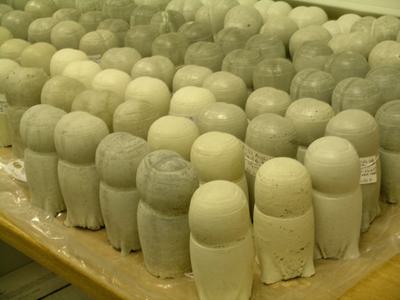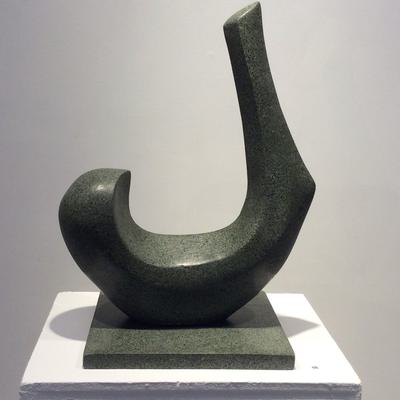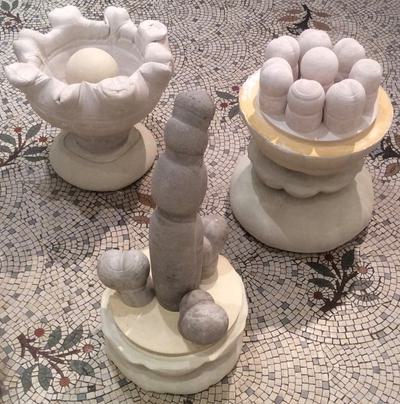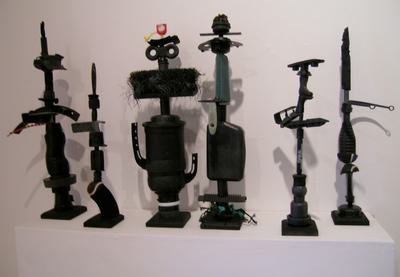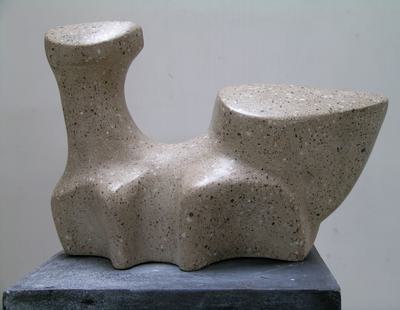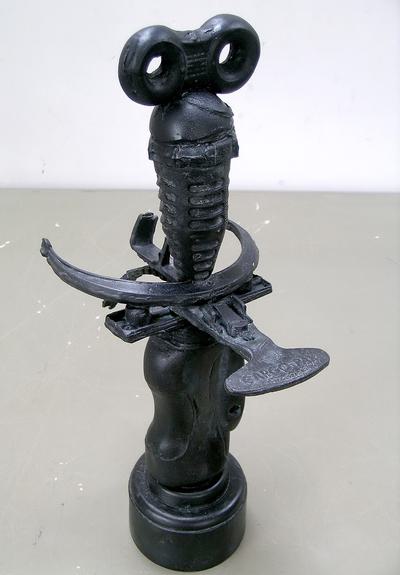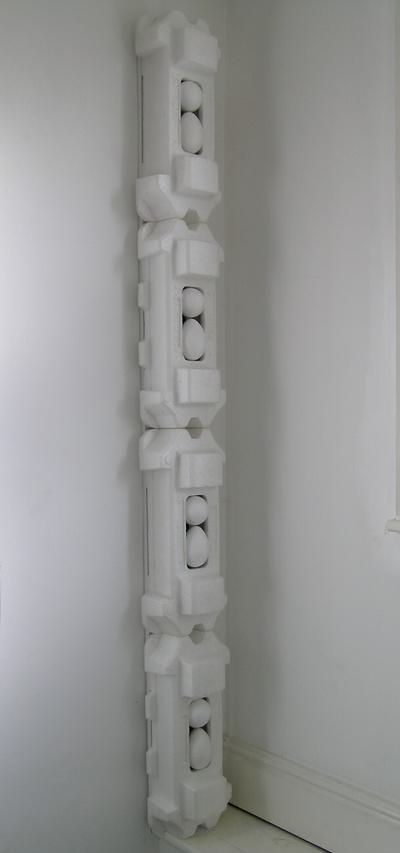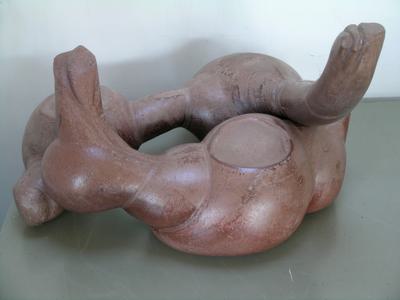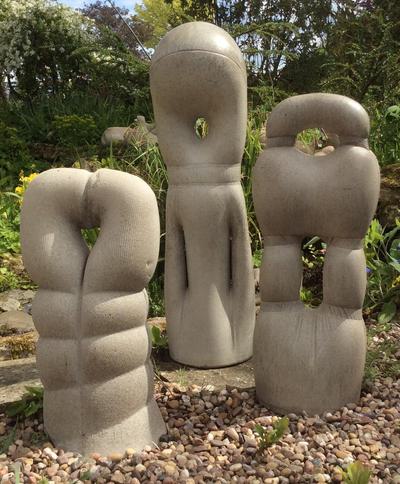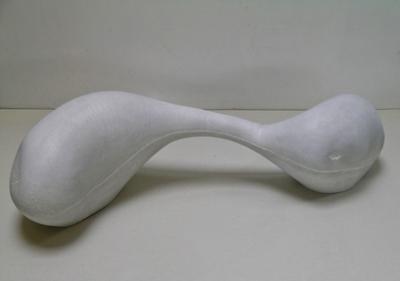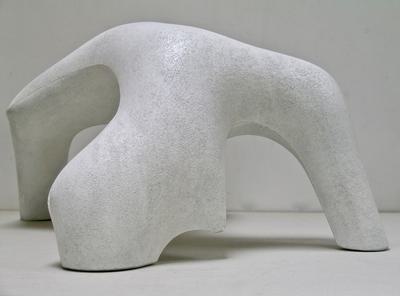Qualifications and training
2020 Arts Council Grant
2018+ Ceramics at Harrogate College
2010/11 Leverhulme Artist in Residence, Civil Engineering, University of Leeds
2009 - Member, Royal British Society of Sculptors, London
2006 - Making it Happen. Training for working with people with learning difficulties and disabilities, Pyramid of the Arts, Leeds
2004 - City & Guilds Level 3 Certificate in Delivering Learning, Park Lane College, Leeds
2002 - MA Fine Art, University of Leeds, Leeds
1999 - BA Hons Sculpture, Bretton Hall, Leeds
1996 - Btec Foundation Studies Art and Design, Leeds College of Art and Design, Leeds
1975 - BA Hons History of Art, University of Manchester, Manchester
Solo exhibitions
2025 - Guest Artist of the month (May) The Sculpture Gallery, Leeds
2019 - Open Studio, North Yorkshire Open Studios
2005 - DomestiCITY, Brahm Gallery, Leeds
Group exhibitions
2025 The Sculpture Gallery, Leeds (Guest artist for May)
2024 Royal academy Summer Exhibition, London
2024 The Art Court Spring Exhibition, Leeds
2024 Material Truths, Royal Society of Sculptors members, OPO art Space, Scarborough
2023 Borrow Pit, Huddersfield Art Gallery
2023 NYOS, Inspired Gallery, N. Yorks Moors National Park
2022 Royal Academy Summer Exhibition, London
2022 Raw Edge, Sunny Bank Mills Gallery, Leeds
2021 Passages, The Old Parcel Office, Scarborough
2021 Shaping the Landscape, Cannon Hall and Wentworth Castle, Barnsley
2020 Invasive Species, Harlow Carr Gardens, Harrogate
2019 - Object/Image/Image/Object, West Yorkshire Print Warehouse
2019 - Temporal Terrains, Crossley Gallery, Dean Clough, Halifax
2019 - (im)Material Disarray, YSI Index, Snap Arts, Wakefield
2019 - Conversations in Sculpture, Huddersfield Art Gallery
2019 - Exhibition of Contemporary Sculpture, Newby Hall
2019 - Breaking Ground, Patchings Art Centre, Nottinghamshire
2018 - Travelling Light, Baltimore Exchange, Maryland, USA
2018 - Connexions, Yorkshire Sculptors Group, Dean Clough, Halifax
2018 - Travelling Light, Water Street Gallery, Todmorden
2017 - Separation 11, Dye House Gallery, University of Bradford
2017 - Separation 1, Dean Clough, Halifax
2016 - Sculptures in the Garden, Stillingfleet Lodge Gardens, York
2016 - Resonance, Summer Exhibition, Beverley Minster
2016 - Tabletop Tableaux, Dean Clough, Halifax
2015 - Contemporary Sculpture at Burnby Hall Gardens, Pocklington
2015 - Floribunda, Yorkshire Sculptors Group, Dean Clough, Halifax
2014 - Lines of Conflict, WW1 commemoration, Batley Art Gallery
2013 - Shelf Life, The Shed Gallery, Ilkley
2013 - Yorkshire Sculptors Group, Creative Arts Hub, Mirfield
2013 - Home Space, (curator for Pyramid of Arts) Trinity Church, Leeds
2013 - Leeds Fine Art Show, North Light Gallery, Huddersfield
2012 - Lines of Conflict, Scarborough Art Gallery, Scarborough
2012 - Summer Exhibition, Royal Academy of Arts, London
2011 - Cement and Concrete Science 2011, Imperial College, London
2011 - Leeds Fine Artists, North Light Gallery, Huddersfield
2011 - Living with Minerals, CBI Conference, Westminster, London
2011 - Yorkshire Sculptors, Smith Gallery, Brighouse, West Yorkshire
2010 - 18@108 Naked, Royal British Society of Sculptors, London
2010 - Thirteen Moons, Kala Sangham, Bradford
2009 - 157 Autumn Exhibition, Royal West of England Academy, Bristol
2008 - 156 Autumn Exhibition, Royal West of England Academy, Bristol
2008 - AA2A Exhibition, Leeds College of Art & Design
2008 - Summer Exhibition, Royal Academy of Arts, London
2007 - Breathing Space, Brahm Gallery, Leeds
2006 - Leeds Imprint, Leeds Design Innovation Centre
2006 - Quarries and Collaborations, Centenary Gallery, Leeds University
2005 - MIST Group Exhibition, Clothworkers Hall, Leeds University
2004 - Laugh and Anguish, University of Leeds, Leeds
2003 - Luarto, Showcase Gallery, Leeds
Artist talks
2012 - Sculptural Concrete: A process lead investigation into fluidity, expanded form, and tactility, The Royal Society, London
2012 - Visiting Speaker, BA Art and Design, University of Leeds
2010 - Sculptors on Sculpture, Royal British Society of Sculptors, London
2009 - Layers of Response, Landscape and Arts Network, Pateley Bridge, West Yorkshire
Residencies
2010 - Leverhulme Trust Artist in Residence, School of Civil Engineering, University of Leeds
2007 - AA2A (Artists Access to Art colleges) Scheme, Leeds College of Art & Design
2006 - Multi-sensory Art Project, Pyramid of the Arts, Ramshead Wood, Leeds
2006 - Yorkshire Quarry Arts, Coldstones Quarry, Pateley Bridge
2004 - Jackdaw Quarry placement, Yorkshire Quarry Arts, Nr. Tadcaster
Educational experience - primary
2004 - Artist in Education, Sculpture Workshops, Yorkshire Sculpture Park, Bretton, Nr Wakefield
Educational experience - secondary
2004 - Artist in Education, Sculpture Workshops, Yorkshire Sculpture Park, Bretton, Nr Wakefield
Educational experience - tertiary
2004 - Artist in Education, Sculpture Workshops, Yorkshire Sculpture Park, Bretton, Nr Wakefield
Educational experience - special needs
2012 - Artist, Eden Group 'Home' exhibition project, Pyramid of the Arts, Leeds
2007 - Artist, Burley Sculptors, Pyramid of Arts, Leeds
2006 - Artist, Multi-sensory arts project, Pyramid of Arts, Ramshead Wood, Leeds
2006 - Assistant, Printmaking Course for adults with learning difficulties, Leeds College of Art and Design, Leeds
Publications
2008 - The Naked Quarry (Yorkshire Quarry Arts)

